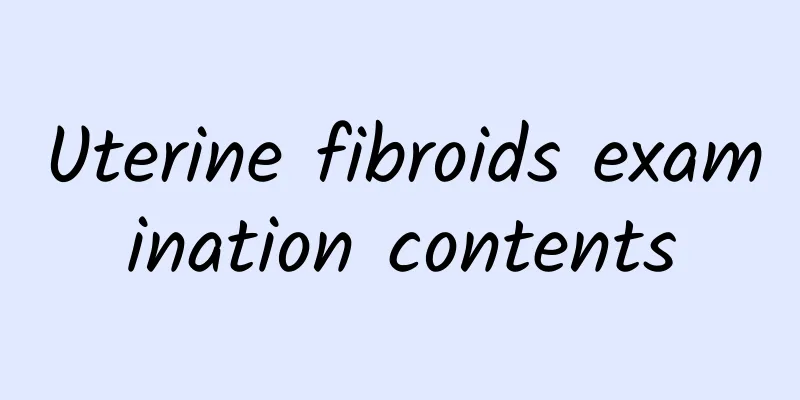I still have dysmenorrhea after 12 days of menstruation

|
If you still have dysmenorrhea after 12 days of menstruation, it may be caused by cold, endocrine disorders, endometritis, endometrial polyps, uterine fibroids, etc. It is recommended to seek medical attention in time and take appropriate improvement or treatment measures under the guidance of a doctor. The specific analysis is as follows: 1. Cold: The normal menstrual cycle is 3 to 7 days, and it is normal to have a menstrual cycle of 12 days occasionally. However, if you do not pay attention to keeping your body warm during menstruation, especially keeping your waist and lower abdomen warm, the coldness can cause the endometrium to contract, which in turn induces dysmenorrhea. You need to choose appropriate clothing to keep warm according to the weather temperature. At the same time, you should also use a 42~45℃ hot water bottle to apply heat to the abdomen for 5~10 minutes, 1~2 times a day. 2. Endocrine disorders: The endocrine system mainly regulates hormone secretion on the basis of nervous system control and material metabolism. If the endocrine system is disordered, it may cause a series of symptoms in patients, such as prolonged menstruation, irregular menstruation, dysmenorrhea, etc. You can follow the doctor's advice to treat it with drugs such as bromocriptine mesylate tablets, ethinyl estradiol cyproterone acetate tablets, and dydrogesterone acetate tablets. 3. Endometritis: The disease is an inflammatory reaction that occurs after the endometrium is infected with pathogens. Under the stimulation of inflammation, patients will experience dysmenorrhea, abnormal menstruation, abnormal vaginal discharge, etc. Patients can follow the doctor's advice and take medications such as amoxicillin clavulanate potassium tablets, metronidazole tablets, and clindamycin hydrochloride capsules. 4. Endometrial polyps: The causes of the disease are related to excessive estrogen levels and inflammatory factors, which can lead to excessive growth of endometrial stroma, causing abnormal uterine bleeding, menstrual disorders, dysmenorrhea, etc. It is usually treated by hysteroscopic polypectomy under the guidance of a doctor, with the aim of completely removing endometrial polyps to achieve the purpose of treatment. 5. Uterine fibroids: The disease is a benign tumor formed by the proliferation of uterine smooth muscle tissue. It is a relatively common tumor. Some patients will experience symptoms such as abnormal menstruation, abdominal masses, and increased leucorrhea. It can be treated with drugs such as mifepristone tablets, tranexamic acid tablets, and triptorelin acetate injection according to the doctor's advice. During the treatment, patients should maintain a positive and optimistic mood, because negative emotions will affect the recovery of the disease. Patients also need to go to the hospital for regular follow-up visits so that doctors can understand the changes in the disease. |
<<: What are the causes of dysmenorrhea?
>>: I haven't had my period for half a year. Is this menopause?
Recommend
Dietary fiber is environmentally friendly in the body! Pears are high in fiber
In winter, we drink less water, do not like to ex...
What are the common early symptoms of ectopic pregnancy?
What are the common early symptoms of ectopic pre...
Why does intrauterine adhesion occur after abortion?
Excessive suction and curettage during abortion c...
Do uterine fibroids affect fertility?
Uterine fibroids are the most common benign tumor...
Is the cause of uterine fibroids due to congenital factors?
Uterine fibroids are common in many women. What a...
Paying attention to personal hygiene is the key to the cause of adnexitis
The incidence of adnexitis has been very high in ...
Symptoms of threatened miscarriage in early pregnancy
After becoming pregnant, pregnant mothers have a ...
The secret to staying slim by eating as much as you want is to use small plates to serve food
At an all-you-can-eat buffet, do you accidentally...
Pay attention to the prevention of cervicitis and avoid excessive miscarriages
The prevention of cervicitis is very important fo...
How to check cervical warts accurately
We all know that if we are sick, we have to go to...
What diseases are women prone to after menopause?
Menopause is an inevitable process in every woman...
How to treat and regulate pelvic effusion
The treatment of pelvic effusion is a question th...
What items should be checked before abortion?
Since my country has implemented family planning,...
What is the cause of cervical prolapse? Caused by uterine inflammation, etc.
Diseases such as cervical prolapse are very commo...
Commonly used drugs for bacterial vaginosis
Many people know that bacterial vaginosis is a di...









